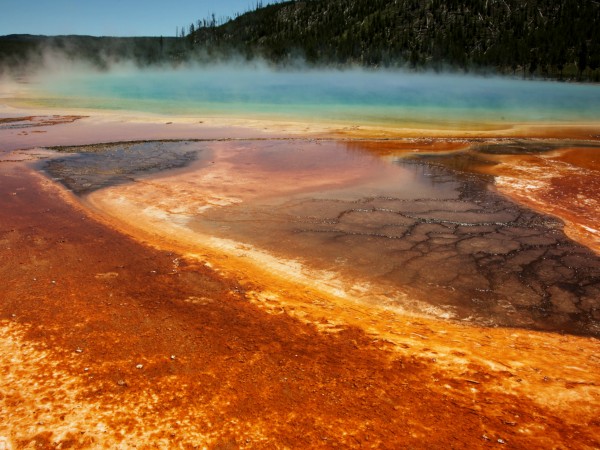If we came across alien life, would we even know it was alive? That was a central question posed at a session here yesterday at the annual meeting of AAAS (which publishes Science). All known life on Earth fits a particular mold, but life from other planets might break free from that mold, making it difficult for us to identify. We could even be oblivious to unfamiliar forms of life right under our noses.
All life as we know it follows a standard protocol, known as the “central dogma,” using DNA and RNA to store genetic information, and translating that into proteins. And all living things rely on the same handful of chemical elements. So, when searching for life in remote or extreme environments scientists typically look for signs of the kind of life we’re familiar with. But, “if we have other organisms out there that do things just slightly differently, we might miss the boat,” geobiologist Victoria Orphan of the California Institute of Technology in Pasadena told attendees.
Biologists have proposed the existence of a “shadow biosphere”—an undiscovered group of living things with biochemistry different from what we’re used to. Most of life’s diversity on our planet is too small to see, making microbes the most likely place to look for these new types of life. Already, new discoveries are shaking our beliefs about what life is. Recently discovered giant, amoeba-infecting viruses blur the line between life and nonlife—although they rely on their hosts for essential biological functions, the bacteria-sized viruses have complex genomes. Such unexpected discoveries suggest that we shouldn’t define what we are searching for by what we know is already out there, Orphan said.
But it’s hard to search for something if you don’t know what it is. One general hallmark to look for, said planetary scientist Carolyn Porco of the Space Science Institute in Boulder, Colorado, is a system that is out of equilibrium. Life takes in and uses energy, altering its environment in the process. Without life, for example, our planet would not have an oxygen-rich atmosphere, as chemical reactions tend to deplete oxygen. The proliferation of left-handed amino acids is another example we see on Earth; life is made up of left-handed amino acids, but not their mirror-images. Such a lopsided situation is an indication of an environment out of whack—and perhaps life.
However, what we can search for also depends on what’s practical. As a result, NASA’s strategy for searching out life on other planets has generally been to “follow the water,” looking for life similar to that on Earth, Porco said, because that's what we know how to find. Porco called on other scientists on the panel to come up with a “working definition” of life that could give planetary scientists guidance as to what else they should look for. For example, on other worlds, life might form in liquid hydrocarbons instead of water, such as on Saturn's moon, Titan. Different markers might reveal life in hydrocarbon seas.
Rather than searching for new forms of life on Earth or in the stars, other scientists study the question from the bottom up, looking for possible precursors of life. Chemist David Lynn of Emory University in Atlanta points out that misfolded proteins—like the those implicated in neurodegenerative diseases such as Alzheimer's—show some similarities to life, namely that they can generate diversity in the different ways that they fold, and can undergo chemical evolution, in which those folded proteins are selected not genetically, but chemically. Such precursors could form complex chemical networks, which might be the foundation of radically different life elsewhere in the universe.
Biochemist John Chaput of Arizona State University, Tempe, takes the approach of working backward from the central dogma, asking if early life could have used a simpler precursor to RNA and DNA. He studies threose nucleic acid, which is not found in nature but can be synthesized in the lab. It forms a similar structure to DNA, but with a different backbone and would've been simpler to produce and replicate on primordial Earth. “Life did not choose DNA or RNA out of chemical necessity,” he said. “There may have been many alternative paths to the evolution of life.”
Check out our full coverage of the AAAS annual meeting.
Source: AAAS


